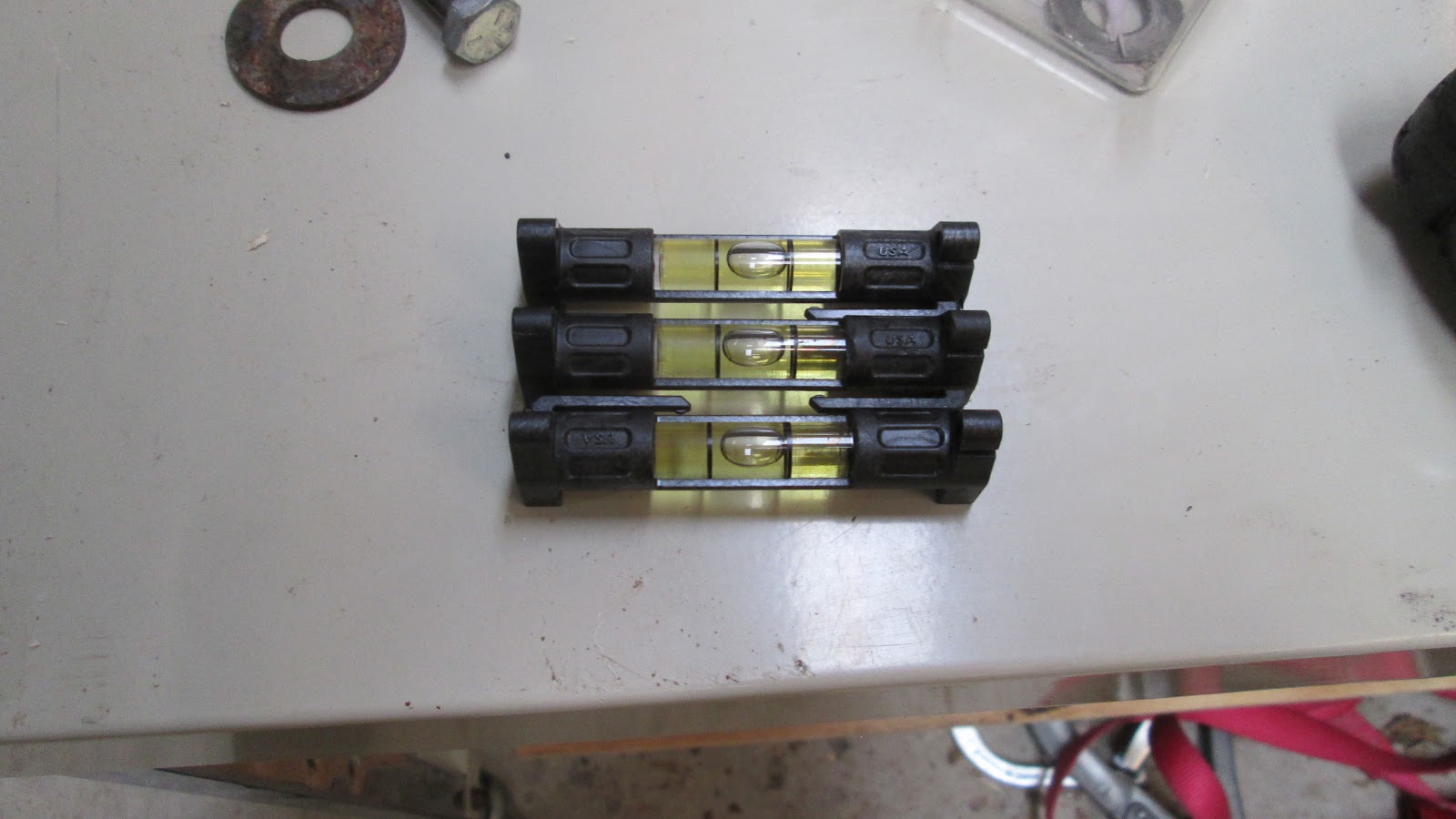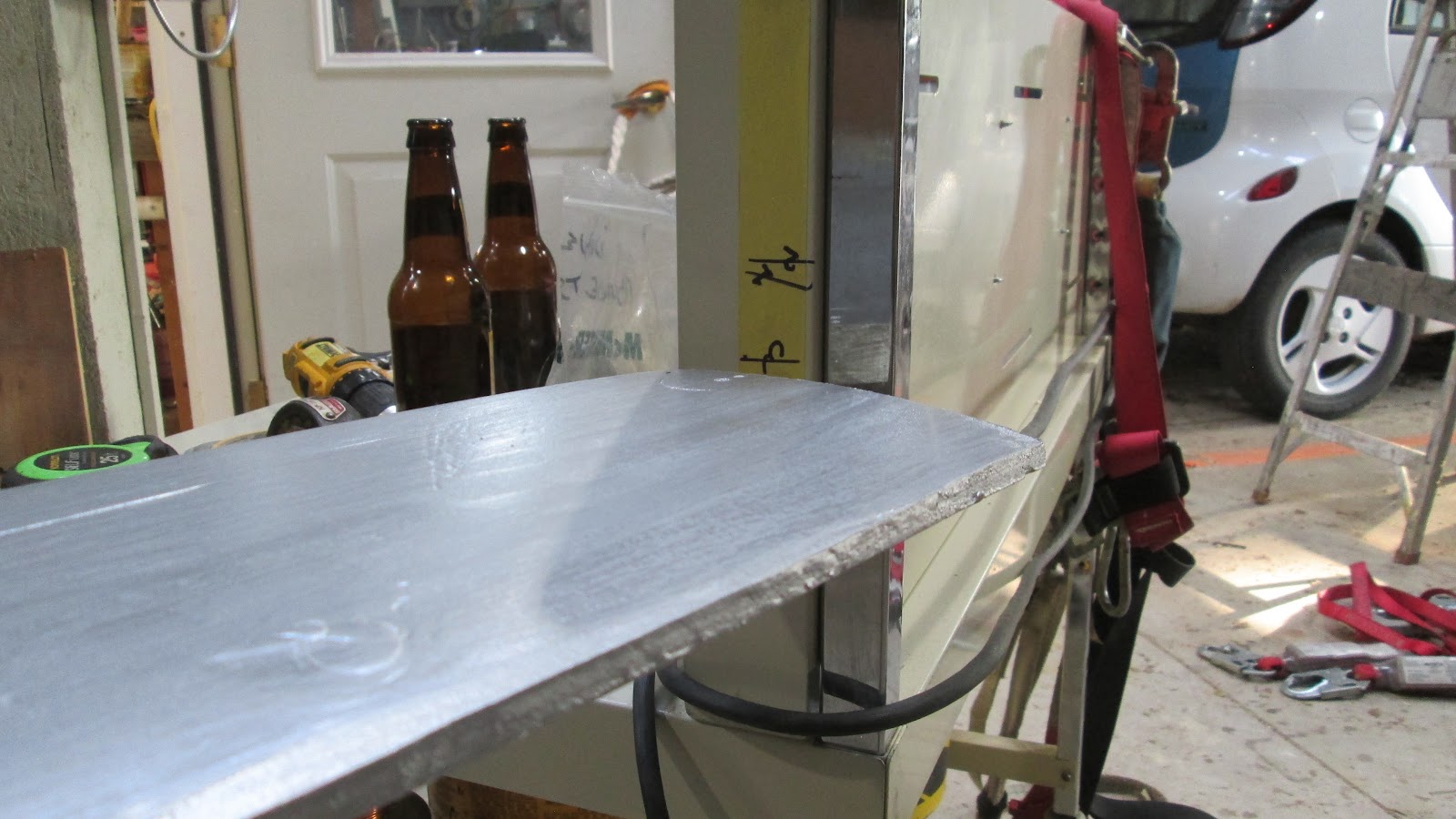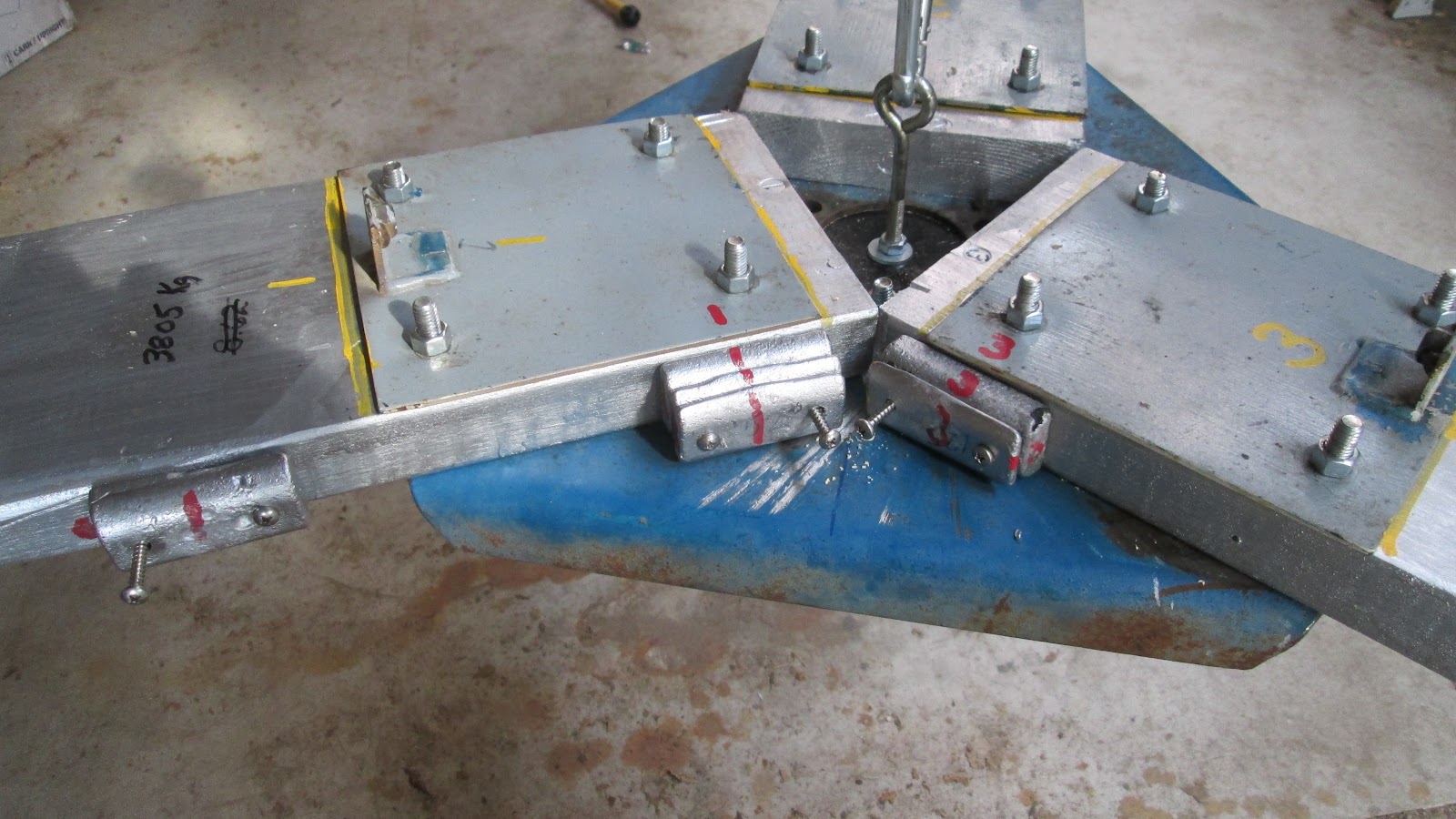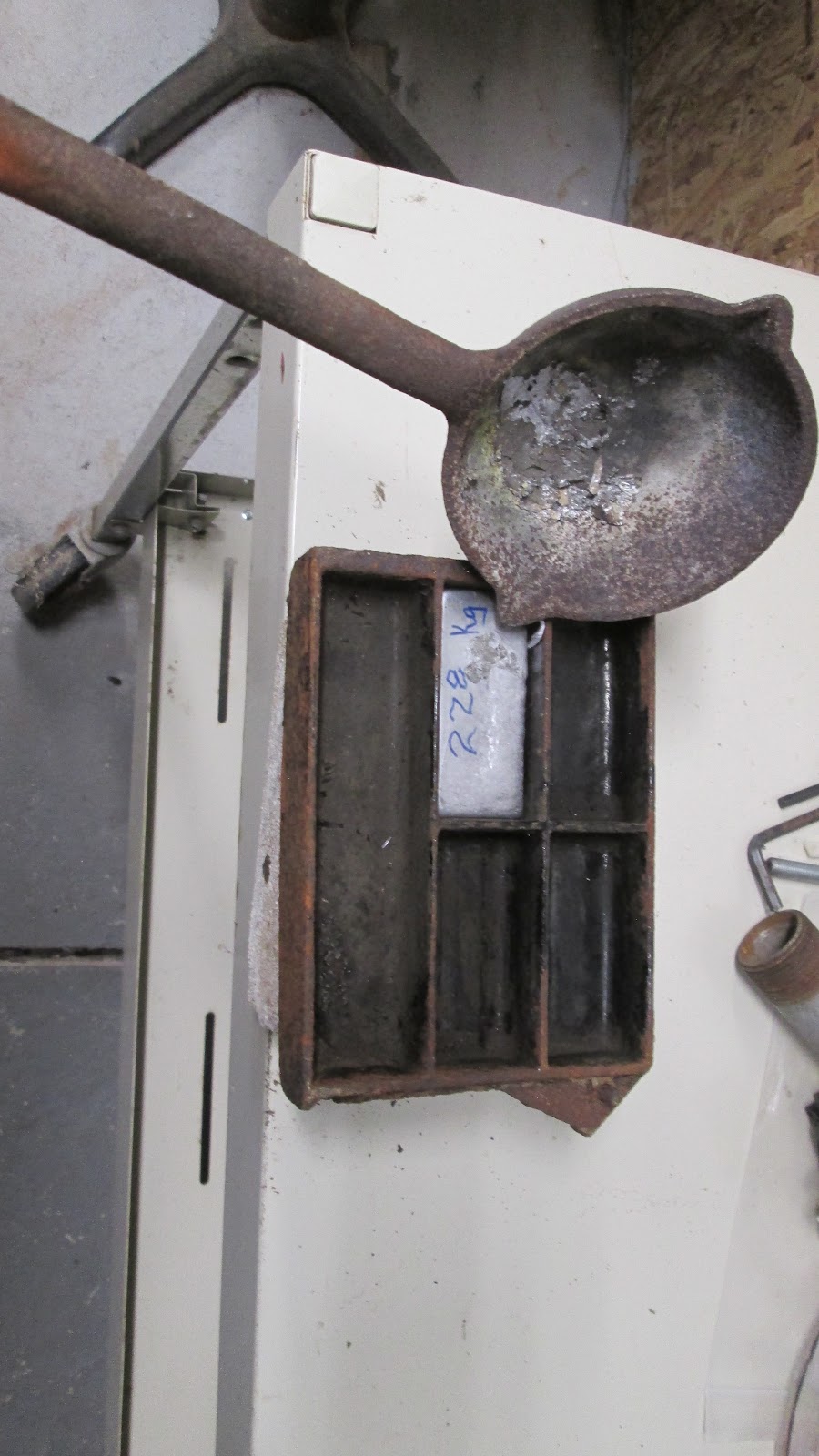In life having a "balance" is important and takes considerable time and effort. So it is with getting a balance for hand made wooden turbine blades. Here is how I went about it. I learned there are different kinds of balance. The first balance I did was to make sure that all three blades were angled 120 degrees apart.
The next balance would be for the weight of the 3 individual blades. I explained in an earlier post that I tried to achieve this by cutting the 3 three blades from one 18 foot pine 2x8. My thinking was that this would insure the density of each blade would be similar. I weighed each blade before and after carving. They were very close with one heavy one.
After carving two of the blades were within 10 kg of each other and the one heavy blade was 200 kg over their readings. My question was do I add weight to the lighter blades or remove wood from the heavier blade?
To do this I would mount the blades to the rotor hub and then hang the assembly at the center point. I would place a string level on each blade. Moving the weights along the length of the blades to get a balance. This was tricky with three blades. Try it if you don't believe me. When I had determined the correct weight and placement along the blades the question became what material to use and how to attach the weights to the blades. My thinking was to get stainless steel punched out the correct diameter for the weight I needed. Then counterbore the blade and screw them on. After a long discussion with Dan B. I came to my senses and learned from his considerable experience that attaching lead weights to the edges of the blades near the root end would be a far superior solution to my blade balancing problem.
Another balance issue to consider is that of the blades being in the same plane when rotated. This was checked by rotating the balanced blades and marking each tip height.
You can get lead from your local tire shop but, where do you get lead weights the size you need? You make them.
And just when you think it is going so good. I wanted to make one more balance test with the blades this time in the vertical position. This would require a new center plug in the rotor plate and axle mounted between two 8 foot step ladders. In the process of trying to raise the 50 pound 3 blade rotor I discovered that I didn't have the room in the shed I needed and would have to take it outside. As luck would have it the trailing edge of this blade went into the seam of the cement floor and when I lowered it I cracked it. My brief response was, #$%&@@!
The feeling that one gets from designing, building and testing something like this is well worth the time and effort. The rotor balanced with the blades in any position.











No comments:
Post a Comment